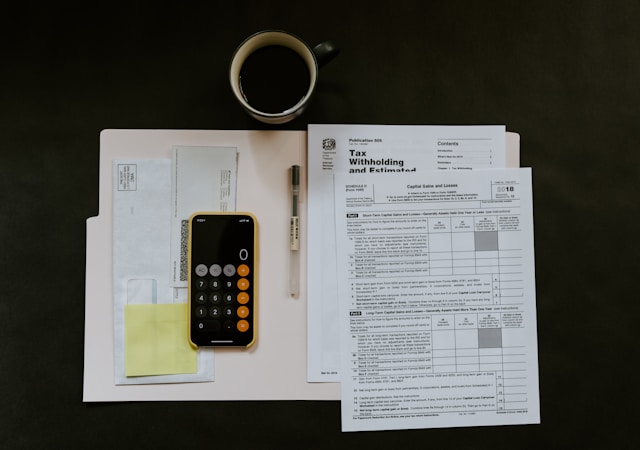- Change theme
Bank Account Reconciliation Explained: Why It’s Still Crucial in 2026

Bank account reconciliation is the process of comparing an organization’s internal financial records with the statements provided by its bank.
01:11 30 May 2025
In an age dominated by real-time payments, AI-driven analytics, and fully digitized financial ecosystems, it may seem like traditional processes such as bank account reconciliation would be obsolete. But in 2026, bank account reconciliation remains one of the most important accounting practices for businesses of all sizes. Whether you're a multinational enterprise or a small business owner, reconciling bank statements against internal records continues to be a foundational step in maintaining financial accuracy, preventing fraud, and ensuring compliance.
Let’s break down what bank account reconciliation is, why it’s still crucial today, and how bank account reconciliation software is transforming the process for modern finance teams.
What Is Bank Account Reconciliation?
Bank account reconciliation is the process of comparing an organization’s internal financial records with the statements provided by its bank. The goal is to ensure that the recorded balances match and that any discrepancies—such as missed transactions, double entries, or bank errors—are identified and resolved.
Typically done on a monthly basis, reconciliation involves checking transactions line by line, identifying unrecorded bank charges or interest, and ensuring that every deposit, withdrawal, and fee is accounted for. While it may sound tedious, this process is essential to maintaining financial integrity.
Why Reconciliation Still Matters in 2026
Despite advances in automation and real-time banking integrations, the reconciliation process is far from outdated. Here's why it's still critical:
1. Catch Errors and Omissions
Automated systems are not immune to human input errors. Incorrect coding, duplicate entries, or missed invoices can still occur. Reconciliation ensures these issues are spotted and corrected before they snowball into larger problems.
2. Fraud Detection
Unauthorized transactions or fraudulent activity can sometimes go unnoticed until a reconciliation process flags them. Whether it’s internal fraud or external breaches, regular reconciliation can serve as an early warning system.
3. Regulatory Compliance
Many industries, particularly those in finance, healthcare, and government, are required to maintain strict financial records. Regular reconciliation is a standard part of internal audits and helps companies stay compliant with local and international regulations.
4. Cash Flow Accuracy
Businesses rely on accurate bank balances to manage their cash flow. An incorrect view of available funds can lead to missed payments, overdrawn accounts, or poor financial planning. Reconciliation provides the real picture.
The Role of Bank Account Reconciliation Software
Manually reconciling accounts can be time-consuming and error-prone, especially for businesses handling hundreds or thousands of transactions each month. That’s where bank account reconciliation software comes in.
This type of software automates large parts of the reconciliation process. It can import bank statements, match transactions against the company’s ledger, highlight discrepancies, and generate reports for review. The result is faster, more accurate reconciliation with significantly less manual effort.
In 2026, modern bank account reconciliation software often includes the following features:
- AI-powered matching algorithms to auto-reconcile transactions
- Cloud-based access for distributed finance teams
- Real-time integrations with banks and ERP systems
- Audit trails and compliance-ready documentation
- Custom rules and workflows tailored to specific business needs
These tools not only streamline reconciliation but also improve visibility and control across an organization’s financial operations.
Reconciliation in the Era of Embedded Finance and Open Banking
With the widespread adoption of embedded finance and open banking in 2026, financial data is more accessible than ever before. APIs allow businesses to pull live data from multiple banking sources, giving them a holistic view of their finances. While this provides greater transparency, it also introduces more complexity.
Many businesses now manage accounts across different financial institutions, currencies, and payment platforms—from digital wallets and fintech lenders to traditional banks. This complexity makes reconciliation even more essential. A single missed transaction or integration error across platforms can result in significant financial discrepancies.
Modern bank account reconciliation software is built to handle this complexity by consolidating data from diverse sources into a unified dashboard, ensuring that every transaction—regardless of origin—is accurately tracked and accounted for.
Best Practices for Bank Account Reconciliation in 2026
To get the most out of your reconciliation process, consider these best practices:
- Automate Where Possible: Use robust bank account reconciliation software to reduce manual work and human error.
- Reconcile Frequently: While monthly reconciliation is standard, consider more frequent cycles—weekly or even daily—if your transaction volume is high.
- Assign Ownership: Designate clear responsibilities within your finance team to ensure accountability.
- Stay Audit-Ready: Maintain documentation and audit trails for every reconciliation, especially if you're in a regulated industry.
- Train Your Team: Even with automation, a well-trained team is essential for reviewing flagged items and understanding exceptions.
Summary
As we move further into an era of digital finance and AI-driven decision-making, traditional financial practices like bank account reconciliation are not disappearing—they’re evolving. In 2026, this process remains a vital control measure that ensures financial accuracy, prevents fraud, and supports compliance.
With the help of advanced bank account reconciliation software, businesses can embrace automation while maintaining the precision and oversight that only reconciliation provides. In short, reconciling your bank accounts is no longer just a best practice—it’s a strategic necessity.
